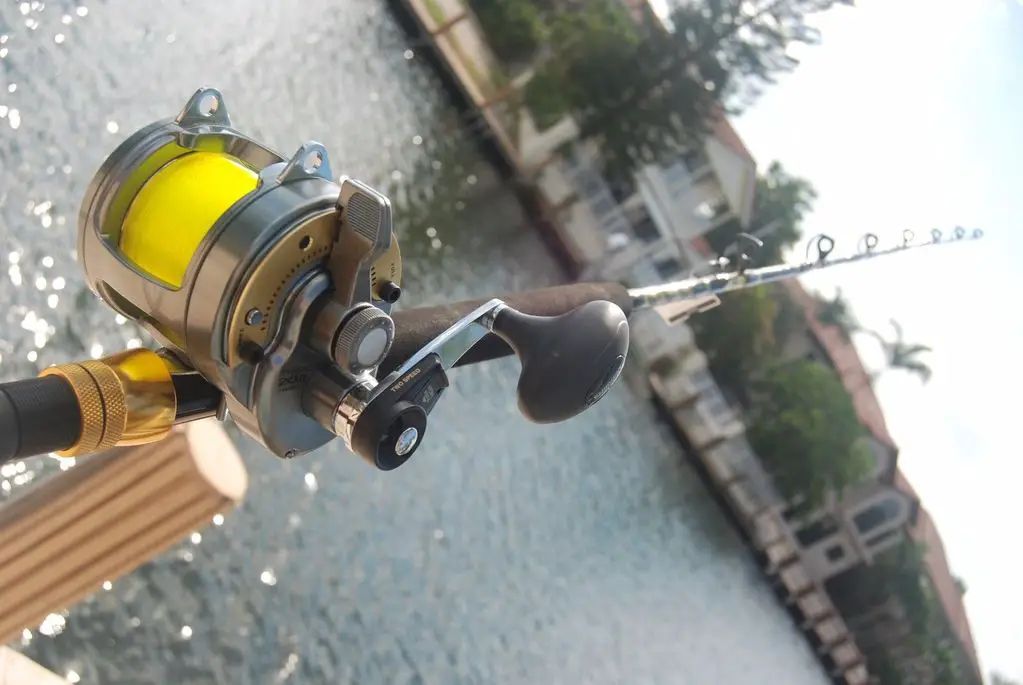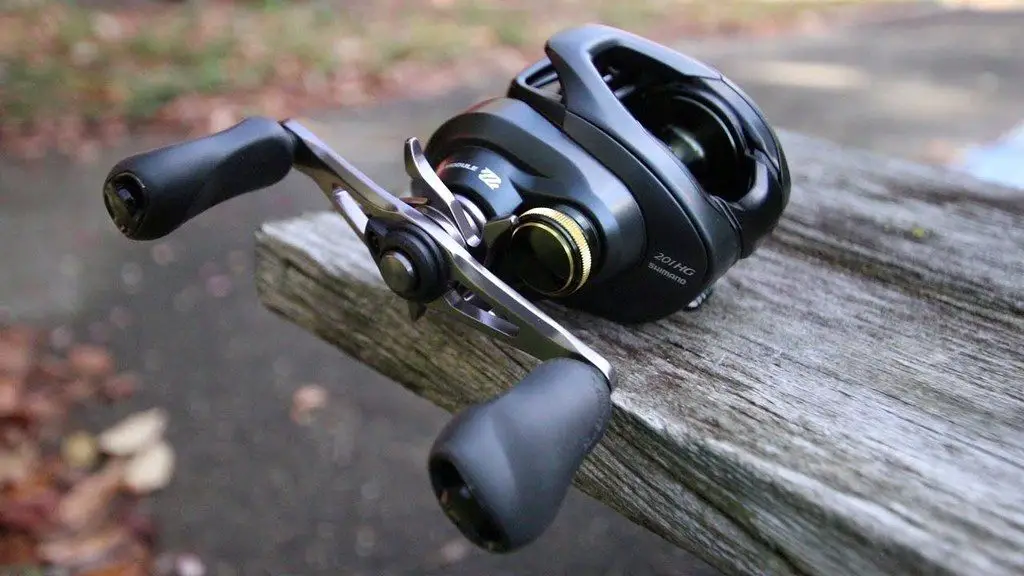Conventional reels are often larger, boasting greater line capacity and more power for efficiently reeling in fish. While baitcasting reels are more compact and lighter, allowing for easier casting and greater control while fishing.
When it comes to fishing, choosing the right reel is crucial to your success and enjoyment out on the water. Two popular options are conventional reels and baitcasting reels, each offering their unique advantages and applications. To make an informed decision, it’s essential to understand the key differences between these reel types and how they can impact your fishing experience.
Despite some similarities, the differences between conventional vs baitcasting reels dictate their application in saltwater and freshwater environments. Familiarizing yourself with these distinctions and each reel’s unique capabilities will enable you to choose the right one for your specific angling needs and preferences.

Table of Contents
Conventional Reels Vs Baitcasting Reels
Conventional reels, often designed for fishing vertically from a boat, trolling, or situations where you let out line without casting, tend to be larger than baitcasting reels with greater line capacity and power for reeling in fish efficiently. Baitcasting reels sit on top of the rod with their spool parallel to the rod. They are popular among professional freshwater and saltwater fishing anglers, thanks to their precision, control, and versatility.
Conventional and baitcasting reels have a spool axis perpendicular to the rod it’s mounted, allowing the line to come off the spool smoothly.
| Metric | Conventional Reels | Baitcasting Reels |
|---|---|---|
| Casting Distance | ⭐⭐ | ⭐⭐⭐⭐ |
| Casting Accuracy | ⭐⭐ | ⭐⭐⭐⭐⭐ |
| Max Drag | ⭐⭐⭐⭐⭐ | ⭐⭐⭐ |
| Weight | ⭐ | ⭐⭐⭐⭐⭐ |
| Price | ⭐⭐⭐⭐ | ⭐⭐⭐⭐ |
| Versatility | ⭐⭐⭐ | ⭐⭐⭐ |
Pros
Conventional Reels
- Larger line capacity makes them ideal for deep-sea fishing and handling larger fish.
- Designed for trolling and vertical fishing.
- Perfect for offshore fishing from a boat.
Baitcasting Reels
- Allows for accurate lure and bait placement.
- Suitable for various fishing techniques and conditions.
- Offers advanced spool control, preventing backlash and improving accuracy.
Cons
Conventional Reels
- Not as capable when it comes to accurately casting lures or baits.
- Limited to certain fishing techniques and conditions.
- Much heavier in weight can lead to muscle fatigue.
Baitcasting Reels
- Requires more skill to operate compared to spinning reels.
- Less line capacity makes them less useful for deep-sea fishing or handling larger fish.
Understanding Reel Types
In this section, we will explore the main differences between conventional reels and baitcasting reels, two popular fishing reels used by anglers worldwide. As you learn about their unique features, advantages, and uses, you will better understand which reel type is best suited for your specific fishing needs.

Conventional Reel
Conventional reels are designed primarily for vertical fishing from a boat, trolling, or situations where you’re letting out the line without casting. These reels tend to be larger than baitcasting reels, offering greater line capacity and more power for reeling in fish efficiently. They are often used for trolling and saltwater fishing, targeting species such as tuna or marlin.
Conventional reels feature a level wind system that evenly distributes the line on the spool, preventing tangles and improving line management. They also have a strong and reliable drag system, allowing you to apply consistent pressure on powerful fish.
Some benefits of conventional reels include:
- Larger line capacity, ideal for long fights with big fish
- Powerful drag system for managing hard-fighting species
- Level wind feature for improved line management

Baitcasting Reel
Baitcasting reels are generally more compact and lighter than conventional ones, making them suitable for casting and offering better control while fishing. Often used by experienced anglers and fishing pros, baitcasting reels are known for their power and precision. They are primarily used for freshwater fishing, targeting species like bass, trout, and striped bass.
Baitcasting reels have several features that set them apart, such as a free spool function for smooth and accurate casting and a braking system that helps prevent backlashes. They also have a higher gear ratio, allowing for faster line retrieval and a more responsive feel when working with lures or jigging.
Some benefits of baitcasting reels include:
- Compact design for easier casting and control
- Higher gear ratio for quicker line retrieval
- Advanced braking system to prevent backlashes
When choosing between conventional and baitcasting reels, it’s important to consider your individual preferences, target species, and fishing environment.

Choosing the Right Reel
| Fishing Scenario | Best Suited Reel | Explanation |
|---|---|---|
| Casting in tight spaces | Baitcasting Reel | Conventional reels handle heavier lines and lures better, allowing for more effective use. |
| Targeting specific locations | Baitcasting Reel | Baitcasting reels provide greater casting accuracy, making them ideal for targeting specific locations. |
| Trolling | Conventional Reel | Conventional reels are designed for trolling, with higher max drag and versatility for various fishing styles. |
| Offshore big game fishing | Conventional Reel | Conventional reels have a higher max drag, making them suitable for battling larger fish in offshore situations. |
| Freshwater bass fishing | Baitcasting Reel | Baitcasting reels offer lightweight and accurate casting, ideal for bass fishing in freshwater. |
| Inshore saltwater fishing | Baitcasting Reel | Baitcasting reels provide precise casting and lighter weight, suitable for inshore saltwater fishing. |
| Fishing with heavy lures and lines | Conventional Reel | Conventional reels handle heavier lines and lures better, allowing for more effective use in these situations. |
| Beginner anglers | Conventional Reel | Conventional reels are generally easier to use and more versatile, making them more beginner-friendly. |
Target Species and Environment
When selecting between a conventional reel and a baitcasting reel, consider the target species and your fishing environment. Conventional reels are generally larger with greater line capacity and more power, making them suitable for saltwater fishing or targeting large species like tuna. On the other hand, Baitcasting reels are compact, lightweight, and more suited to freshwater fishing, such as lure fishing for bass or casting for trout.
Another aspect to consider is the wind and the environment. Baitcasting reels can be more susceptible to line twist and may pose challenges when casting into headwinds.
Fishing Techniques
Different fishing techniques benefit from different types of reels. Baitcasting reels excel in casting techniques, providing more control and precision while casting. These reels also offer a wider range of gear ratios for various fishing styles, making them popular among bass anglers.
| Technique | Gear Ratio | Benefits |
|---|---|---|
| Slow Techniques | 5.1:1 | Increased torque for reeling in larger fish |
| Medium Techniques | 6.1:1 | Balanced for versatile fishing situations |
| Fast Techniques | 7.1:1 | Quick line retrieval for fast-moving lures |
On the other hand, conventional reels are designed for vertical fishing techniques like trolling or deep-sea fishing. These reels often come with larger line capacities and a focus on torque, making them suitable for reeling in larger, more powerful fish such as striped bass or saltwater species.
When selecting your reel type, consider your preferred techniques:
- For casting and freshwater fishing, consider the baitcasting reel
- For trolling, deep-sea or saltwater fishing, opt for the conventional reel
Additionally, consider factors such as the line type you plan to use. Monofilament and fluorocarbon lines require different reel characteristics. Match your chosen reel with the appropriate line type to ensure smooth operation and optimal performance. Finally, consider the reel’s bearings, construction, and overall quality when selecting. Top brands like Daiwa offer various options in both conventional and baitcasting reels for you to choose from.
Caring for Your Reels
Maintenance Tips
To keep your conventional and baitcasting reels in top condition, follow these maintenance tips:
- Regularly inspect the reel for damage or wear, especially the bearings and line guides.
- Lubricate moving parts to ensure smooth operation. Use a light oil designed for fishing reels or a high-quality synthetic oil.
- Tighten any loose screws or fittings.
- Check and adjust the drag system as needed. This will help maintain optimal performance and reduce the chance of line breakage.
- If you have a reel with a removable spool, periodically remove it and clean the area underneath to prevent dirt and debris buildup.
Proper Storage
When storing your fishing reels, consider these points:
- Store the reels in a cool, dry place away from direct sunlight and extreme temperatures.
- Avoid leaving reels in outdoor or damp environments, as moisture can cause corrosion and damage to internal components.
- Detach the reel from the rod during long-term storage to prevent stress on the reel seat and rod.
- Loosen the drag to minimize tension on the internal components and prolong the life of your reel.
- Use a reel cover or case for added protection during transport or storage.
Cleaning
Clean your conventional and baitcasting reels after each use, especially if you’ve been fishing in saltwater or dirty conditions. Here are some steps to follow:
- Wipe down the reel with a damp cloth to remove dirt, grime, and salt residue.
- Use a soft-bristled brush to clean tight spaces and hard-to-reach areas.
- Rinse the reel with fresh water, being careful not to submerge it, as this could damage internal components.
- Dry thoroughly with a soft cloth or towel.
- Apply lubricant to the necessary areas, such as bearings and pivot points.
Caring for your fishing reels—whether conventional reels or baitcasting reels—by following these maintenance, storage, and cleaning tips will ensure the longevity and performance of your equipment. Both reel types, whether made of graphite or other materials like those produced by Abu Garcia, deserve proper care and attention for enjoyable fishing experiences.
Selecting Rods and Other Tackle
Matching Reels and Rods
When choosing a fishing rod, it’s important to match it with the appropriate reel. For conventional reels, general-purpose rods typically range from five to seven feet long and can be used in freshwater and saltwater environments. Conventional rods are ideal for trolling, jigging, and bottom fishing techniques due to their strength and versatility.
Baitcasting reels must be paired with casting rods. These rods have more backbone, allowing for increased casting accuracy and control. The small guides on casting rods help reduce line friction when casting, which helps minimize backlashes.
Some popular brands to consider when selecting a rod for your conventional or baitcasting reel are Shimano, St. Croix, and G. Loomis.
Choosing Line and Other Tackle
Different fishing situations call for various types of line, and matching the line to your reel is critical. Monofilament or braided lines are recommended when using a conventional reel due to their low stretch and strength. These lines work well for trolling and bottom fishing applications where heavy loads are common.
Baitcasters perform best with fluorocarbon or braided lines. Fluorocarbon provides abrasion resistance and low visibility, making it suitable for bass fishing and other freshwater angling situations. Braided lines offer exceptional strength and low stretch, ideal for applications where sensitivity and solid hooksets are crucial.
When selecting other tackle, consider the type of fishing you’ll be doing. For conventional reels, trolling reels with a high gear ratio are recommended for fast-moving presentations, while lower gear ratio reels are better suited for jigging or bottom fishing. Baitcasting reel users should consider the intended target species and adjust their tackle accordingly. For example, bass anglers will benefit from using jigs, crankbaits, and topwater lures.
Remember to always select high-quality fishing tackle, including hooks, leaders, swivels, and sinkers, to ensure a successful fishing experience.
